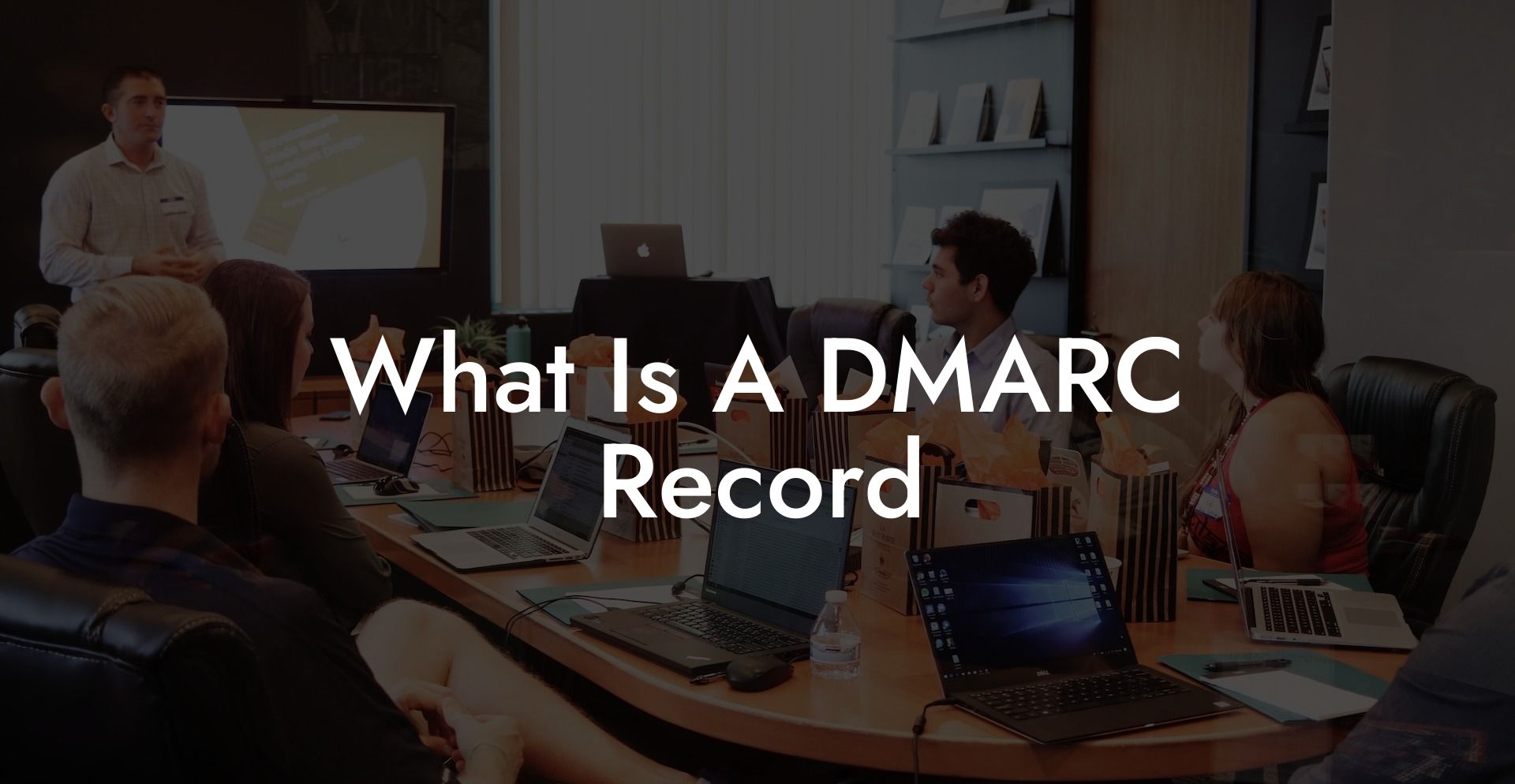In today's digital age, protecting your business's sensitive information is of paramount importance. Email is a primary method of communication and therefore a prime target for cybercriminals. This is where DMARC records come in. This article will provide you with a comprehensive guide to understanding DMARC records, their benefits, and how to implement one for your domain to protect you from cyber threats.
What Is A DMARC Record Table of Contents
What is a DMARC Record?
Domain-based Message Authentication, Reporting, and Conformance (DMARC) is an email validation system that protects your domain from email spoofing and phishing attacks. It is designed to enhance email security by allowing domain owners to specify their email authentication practices and how to handle incoming emails that fail authentication checks.
How DMARC Works
Protect Your Data Today With a Secure Password Manager. Our Top Password Managers:
DMARC operates on top of two existing email authentication technologies - Sender Policy Framework (SPF) and DomainKeys Identified Mail (DKIM). While SPF checks if an email is sent from an authorized source, DKIM adds a digital signature to outgoing emails to verify their authenticity. DMARC combines these two methods and adds a reporting mechanism, providing domain owners the ability to monitor their domain's email flow and ensure that only legitimate emails are sent from their domain.
The Components of a DMARC Record
- Version: Specifies the DMARC record version.
- P: The policy indicates the action to be taken when an incoming email fails DMARC checks. The options are 'none', 'quarantine', or 'reject'.
- RUA: Stands for "Aggregate Reporting URI." Contains an email address where aggregate reports will be sent.
- RUF: Stands for "Forensic Reporting URI." Contains an email address where forensic (detailed) reports will be sent when the DMARC policy is violated.
- ADKIM: Specifies DKIM record alignment settings. Options are 'r' (relaxed) or 's' (strict).
- ASPF: Specifies SPF record alignment settings. Options are 'r' (relaxed) or 's' (strict).
- PCT: Determines the percentage of emails subject to the DMARC policy enforcement.
Benefits of Implementing DMARC
Implementing a DMARC record has several benefits for businesses, including:
- Protection from spoofing and phishing: DMARC helps ensure that only legitimate emails from your domain are delivered to recipients, reducing the risk of your domain being used for malicious purposes.
- Improved email deliverability: By demonstrating that your domain adheres to industry-standard security practices, your emails are more likely to be delivered to the intended recipient's inbox rather than being marked as spam.
- Maintaining brand reputation: Reducing the chances of your domain being used for malicious purposes helps maintain a positive brand image, as recipients are less likely to associate your domain with spam or phishing attempts.
- Visibility: DMARC's reporting mechanism provides domain owners with detailed information about their domain's email traffic, helping them identify and address potential security vulnerabilities.
What Is A DMARC Record Example:
To better illustrate DMARC, let's consider an example. Suppose you own the domain "example.com" and have published a DMARC record with a policy set to "reject." When an incoming email from "@example.com" arrives at a recipient's server, the server will perform DMARC checks using the SPF and DKIM methods. If the email passes these checks, it will be delivered. However, if the email fails the checks, the server will reject the email based on your DMARC policy, preventing the email from reaching the recipient's inbox.
In conclusion, implementing a DMARC record is an essential step in securing your domain from spoofing and phishing attacks. By leveraging existing email authentication technologies and providing additional visibility and control, DMARC helps create a safer online environment for businesses and email users alike. To further safeguard your domain and email communication, consider exploring other Voice Phishing guides and best practices. Share this informative article with your professional network to help promote a more secure online world.
Protect Your Data Today With a Secure Password Manager. Our Top Password Managers:















